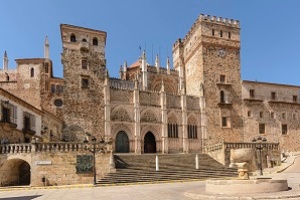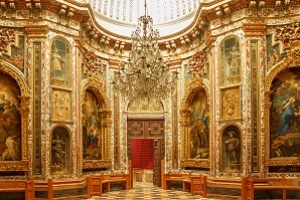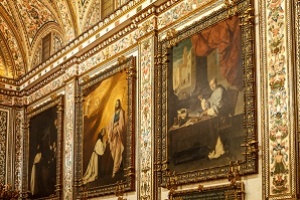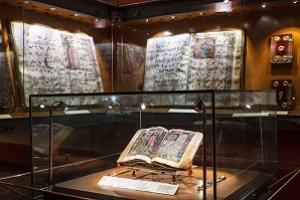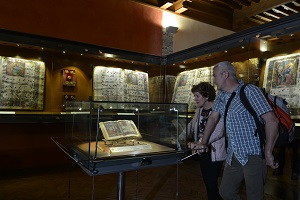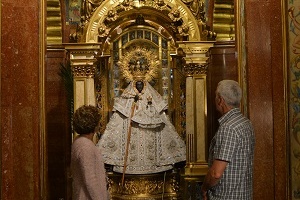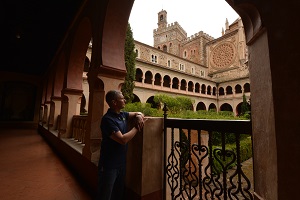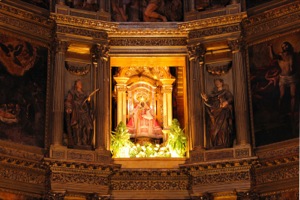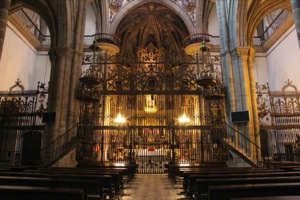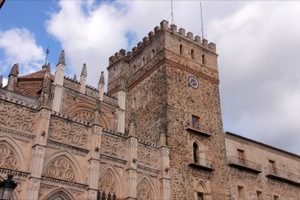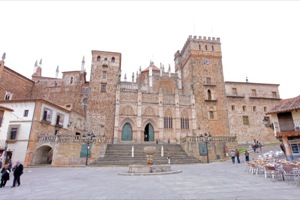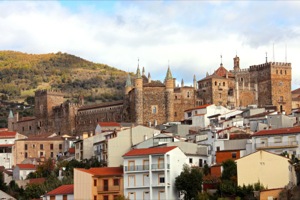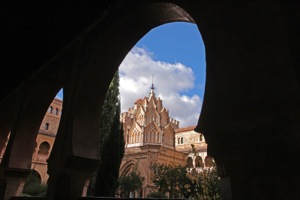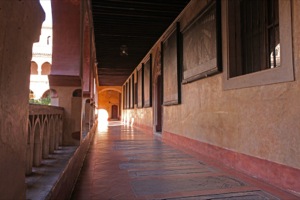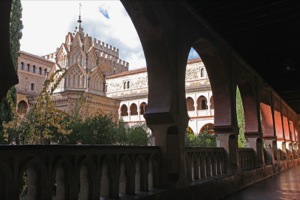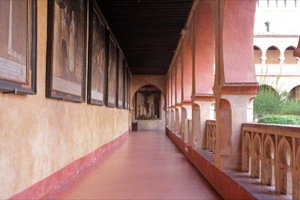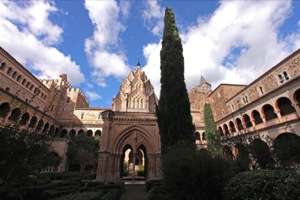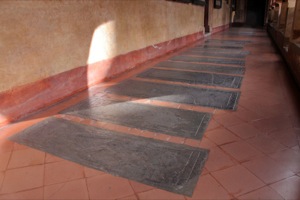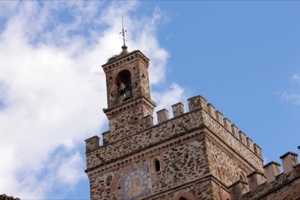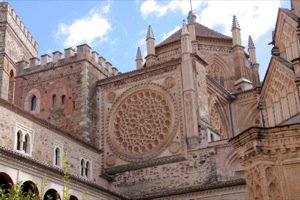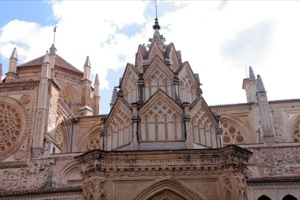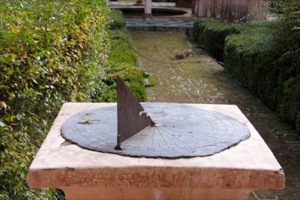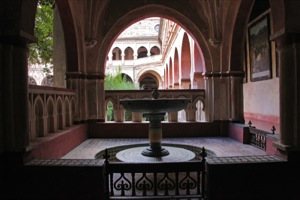Art and culture
Royal Monastery of Guadalupe
This holy place, which has been declared a Universal World Heritage Site, stands opposite the Central Square.
- Explore
- Monastery of Nuestra Señora de Guadalupe
History and devotion in the house of the Patron Saint of Extremadura
Location and Contact:
- Tel.:+34 927 36 70 00
- Fax: +34 927 36 71 77
- Email: rmsmguadalupe@planalfa.es
- Email: gchamizo@gmail.com
- Website address: www.monasterioguadalupe.com
- Facebook: https://www.facebook.com/MonasterioGuadalupe?rf=354787257940916
- Opening times
Morning: 9:30 am - 1pm
Afternoon: 3:30 pm to 6 pm
- Fee
General Admittance Fee: €5
Retirees: €4
Children up to 14 years: €2.5
-
This holy place, which has been declared a Universal World Heritage Site, stands opposite the Central Square.
According to the legend, at the end of the 13th century, a shepherd from Caceres found a wooden sculpture of the Virgin Mary, which had been hidden there by monks from Seville, fleeing from the Moors around 714. The story also goes that while this shepherd, who was called Gil Cordero, was looking for a cow, the Virgin appeared before him and asked him to build a small shrine to her, which he did.
King Alfonso XI, who would go hunting in the area, decided to expand the building, and in 1337 he ordered a Mudejar church to be built which he declared a Royal place of worship.
However, the church of the Royal Monastery of Guadalupe has been built three times. The one which has survived to this day is in a Gothic style.
The church has a Latin cross shape and three naves, transept, terminating with a polygonal apse. The altarpiece contains sculptures by Jorge Manuel Theotocópuli, the son of El Greco.
The monastery also has two sets of cloisters. The style is of the best Mudejar has to offer. One of the highlights is definitely the central shrine, believed to be the work of Fray Juan de Sevilla. In this cloister, you will also see paintings with representations of the miracles of the Virgin Mary.
During the period in which the Hieronymite monks governed the temple, the Extremaduran painter Francisco de Zurbarán painted eight enormous canvases to decorate the sacristy. These paintings illustrate different scenes in the life of these monks who lived here at that time. He also decorated the ceilings and the small chapel of Saint Jerome
When you reach the Virgin's niche, it seems you are in "heaven's antechamber". That is how some people describe it. With an octagonal floor plan and Rococo style, it was the work of Francisco Rodríguez Romero. If you like Italian painters, in this room you will be able to see paintings by Luca Giordano and murals by Francesco Leonardi.
A visit to the monastery is not complete without seeing the museums. The first is an embroidery museum, and shows the craftsmanship done in the monastery itself. The illustrated books museum is in the Mudejar cloister, while the painting and sculpture museum, where you can view works by El Greco and Goya, is in the former pastry kitchen.
Two important dates for Guadalupe and its monastery are the 8th of September, which is the Official Extremadura Day, given that the Virgin is the patron saint of the region; and the 12th of October, as the Virgin is also the Patron Saint of Columbus Day. The latter celebration has been declared a holiday of national tourism interest for Extremadura.
-
- Origin:
-
- 14th century
- Construction:
-
- Monastery
- Art period:
-
- Gothic
- Mudejar
- Period in history:
-
- 14th century
Accessibility:
- Admits guide dogs
- Adapted educational materials
- Accessible restaurant
Gallery:
More suggestions
-
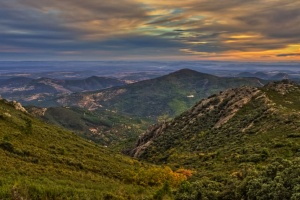
Extremadura's Geopark
The Villuercas-Ibores-Jara Geopark is not to be missed, with its spectacular landscapes, rich biodiversity and paleontological remains.
-
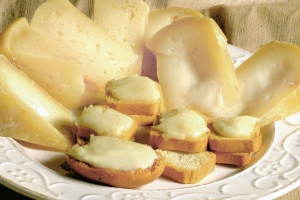
The goat's and sheep's cheeses are more than a speciality amongst the region's livestock farmers.
-
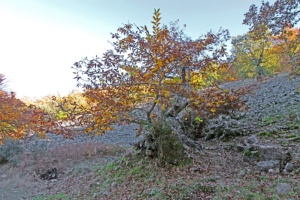
The Calabazas chestnut trees
This natural site consists of a group of 17 monumental chestnut trees and a gall oak in the Castañar de Ibor district.
-
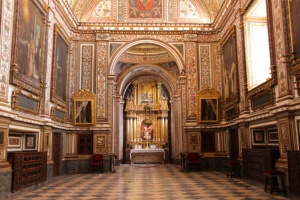
Museums of the Royal Monastery of Guadalupe
The old bakery, refectory and the Mudejar cloister are some of the places in the Monastery that house the museums
-
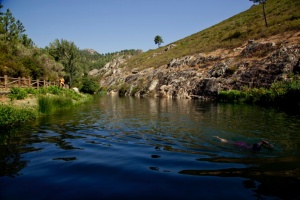
La Nutria
Hiding amongst the trees and greenery is a natural pool with cool, clean water from the Ruecas river.
-
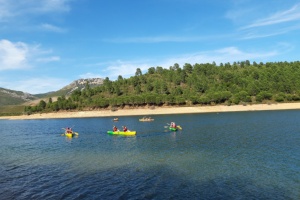
Playa Cancho del Fresno
-
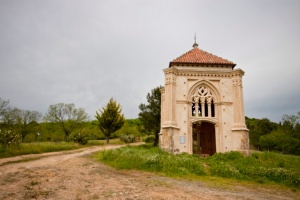
Chapel of El Humilladero
The main function of this chapel is as an oratory for the pilgrims who come to Guadalupe from the north.
-
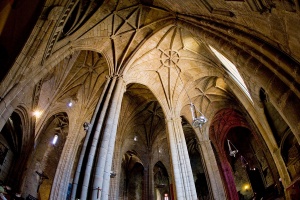
Mirabel Estate
Alfonso XIII, Rainier III of Monaco or Miguel de Unamuno have lived or stayed in the rooms of this palace.
-

Valdefuentes Estate
This estate was converted into one of the residences of Queen Isabel la Católica during her periods of rest in Extremadura.
-
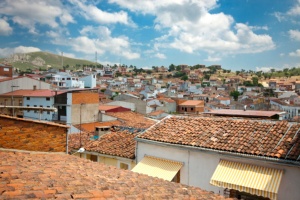
Cañamero
Nature lovers are in for a treat in Las Villuercas, which is also famous for its Designation of Origin wines.
-
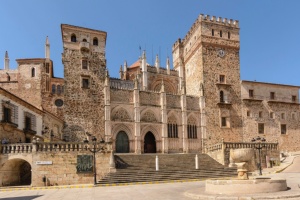
Guadalupe — an artistic and spiritual centre
The Royal Monastery of Santa María de Guadalupe is the most important monument in the town, the services offered by which are a genuine plus for all visitors.
-

Extremadura's Geopark
The Villuercas-Ibores-Jara Geopark is not to be missed, with its spectacular landscapes, rich biodiversity and paleontological remains.
-

Sierra de Las Villuercas and Valle del Guadarranque ZEPA (Bird Sanctuary) Interpretation Centre
Gardens with indigenous plants, a viewing platform with unique views, and exhibition and reproduction rooms are some of the components that make up the centre.


